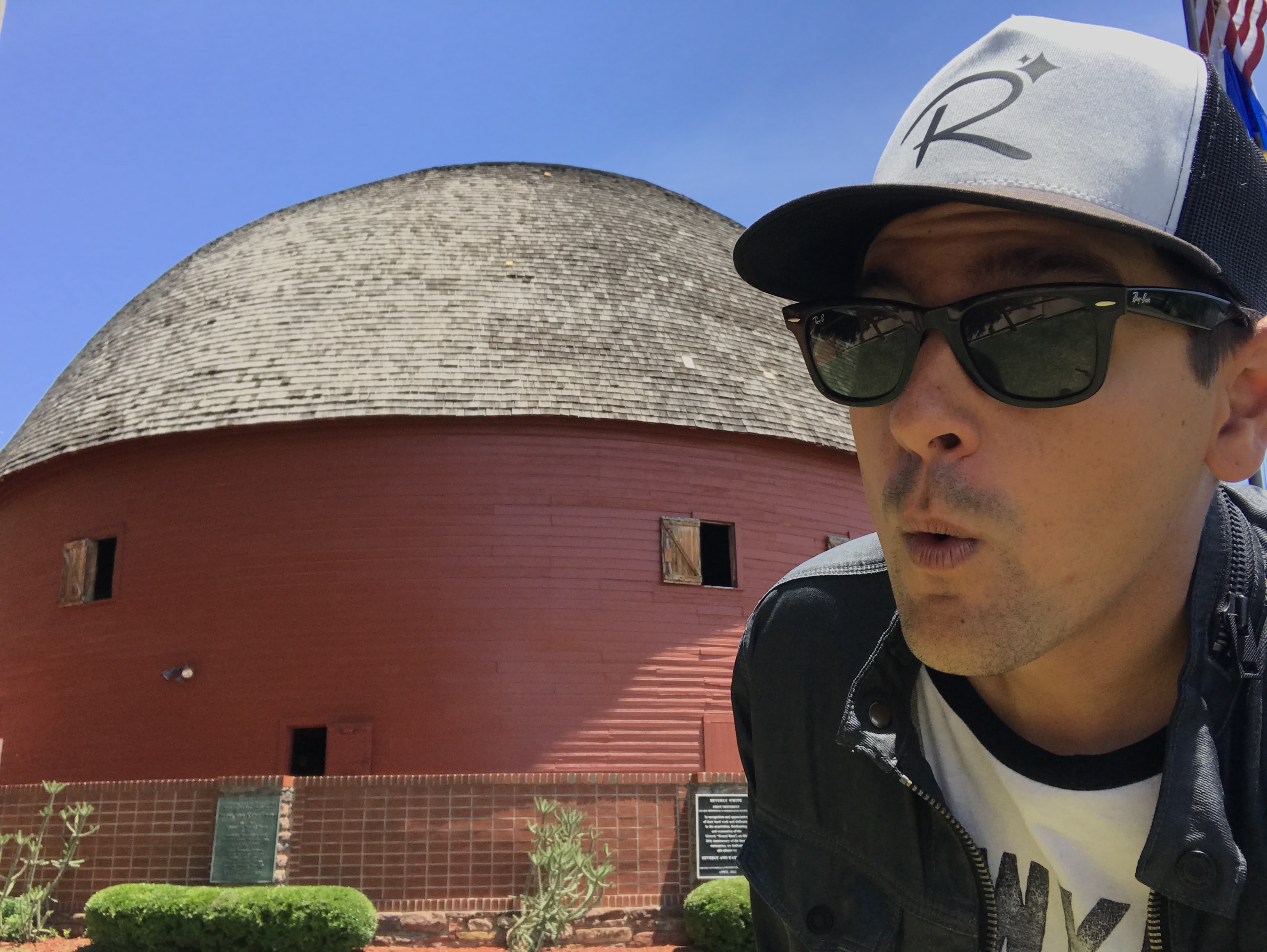What was your childhood like?
It was normal. My family grew up right across the street from Disneyland, so I was at the fireworks every night, from the outside kind of thing. But, it was pretty normal. [We did] not have very much money. More imagination than money.
When we were kids, my parents used to take [me and my brother] on road trips. That’s what they saved their money up for. It’s kind of funny because we grew up next to Disneyland, where everyone was taking road trips to, and then when we went on vacation we would go away from it, out into the middle of nowhere. So, we were sort of doing the opposite thing to most people. But, it was pretty fun. And then at some point we got a video camera and I spent half my childhood making stupid videos. And apparently it’s in the blood now.
What prompted you to start your YouTube channel?
Well, a friend of mine had been doing YouTube for a while, just different stuff. And he’s always joking around and getting hyper and doing all this stuff in his videos. And in real life, he’s just a really calm, normal sort of guy. And he kept telling me, “You should really be in front of the camera. This whole shtick that I’m doing, that people are watching and really like, you’re really like that in real life.
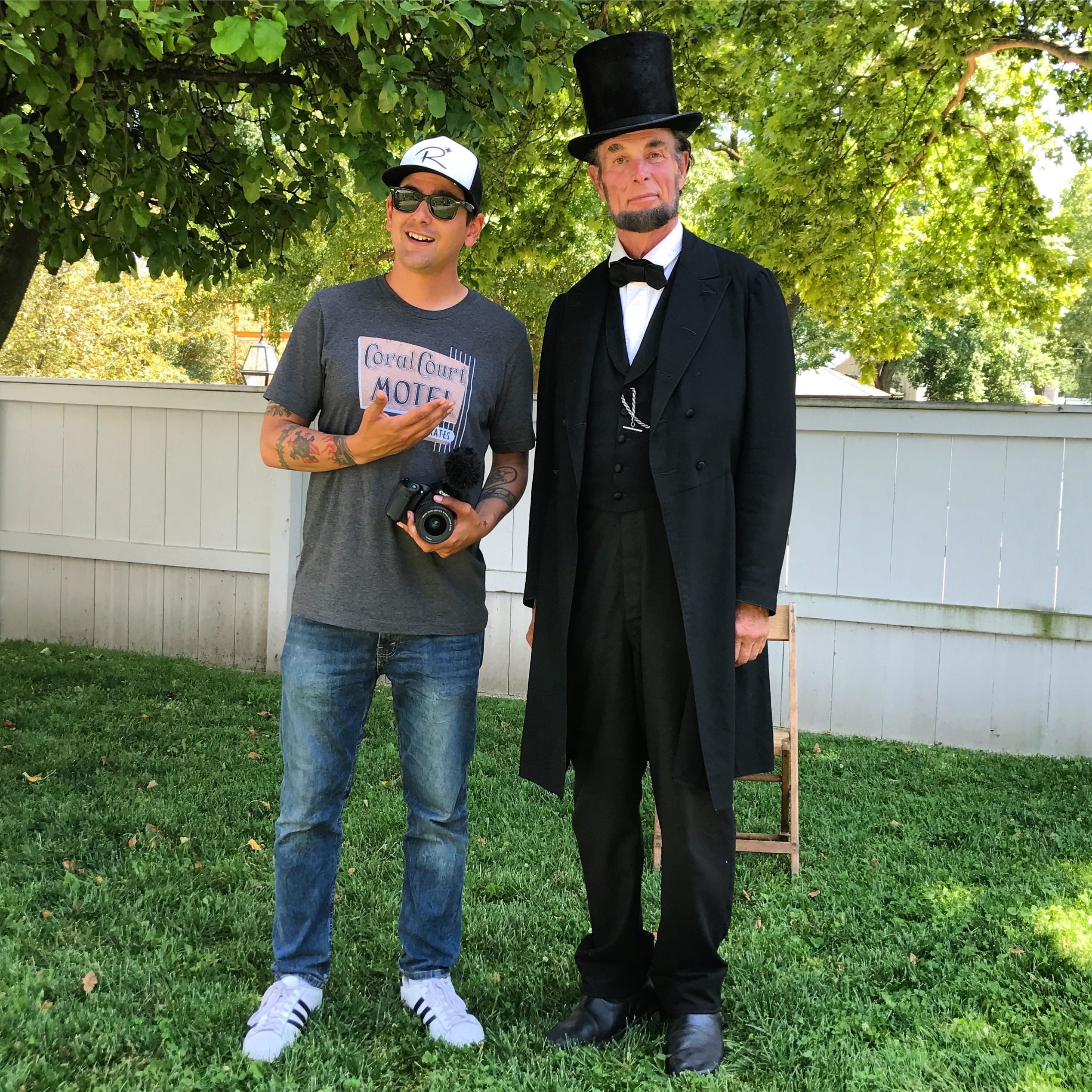
I think people would [watch you]. You should be in front of the camera.” So, he kept trying to convince me. I ended up taking him to Disneyland and I’m telling him all this stuff about the history and Walt Disney, and how this was built, and which designer worked on this, bla, bla, bla, and he was like, “You should be posting videos. You should do that. Put that in the videos.” So, I started with that as a side thing. I ended up quitting my band because fifteen years of trying something and failing was like, that’s enough. Then I went through a really nasty divorce. And while I was going through that I had nothing else to do. So, I was like, well, I’ll just do this for now as a distraction for myself. It helps me to keep focused on something positive, and this way I don’t drown in a pool of “poor me”. I remember thinking ... I was going to look for a job, like a normal job. And I remember talking to a friend of mine who was cutting my hair and saying to him, “If I have to work at a normal job, I can maybe make two or three people smile per day. But if I keep doing [videos], I’m already making 500 people happy every day, or whatever. So I was like, I think I’m going to just keep doing this as long as I possibly can. I just had a divorce, I had to move back in with my parents anyway, and I remember telling them, “My whole life fell apart, I think I’m just going to spend a year doing this.” Everyone thought I was crazy and it turned into my full-time job. So, I’m pretty grateful that people apparently find me somewhat amusing.
Did you always want to travel along Route 66?
Well, when I was, I’d say, [around] sixteen, I was in a band, and for the next fourteen, fifteen years, we traveled as a band across the country, going on tour all the time. So, I loved being out on the road. We’d sleep in the van, sleep at truck stops. And if you have to do any amount of cross- country traveling, then you end up spending a lot of time on I-40. Everywhere we went along Interstate 40, there was all of this old Route 66 stuff. I never grew up with anyone talking about Route 66, or mentioning Route 66. I sort of stumbled onto it by accident, because I was just out there. And I’d be like, “What is that?” You know, it actually still surprises me how many people ask me, “What is Route 66? What’s the big deal with that?” But I was the same way. I had no idea. But little by little, as we were going down the Interstate, because we had to make it by seven o’clock to whatever club every single night, I was like, “You know, I really wish I could just go down those little roads.” We would get these little tiny pieces, like we’d get a little piece in Albuquerque, or we’d get a little piece in Flagstaff. Stuff like that. And I’d always just wanted to get off that road.
When I was thirty-one, doing YouTube videos accidentally became a full-time job. I started by just doing them at Disneyland, local to where I was, just for fun. Now, there’s millions of Disneyland history videos, videos all over, theme park videos all over YouTube. But at the time, there weren’t really a lot that I wanted to watch, sort of like History Channel style videos, but maybe with a little more ADD.
And as soon as I started to have more and more of an audience I was like, “Oh, well maybe I should show people the other stuff I like, roadside attractions, and stuff I had seen on tour.” From the very beginning, in my head, I was like, okay, someday, I’m going to take a trip down Route 66 from the beginning to the end. So, in 2017, I finally got to do it, and I spent, I think, it was forty-five days. Thirty-five videos and forty-five days. It’s pretty crazy.
What do you find appealing about the road?
A big part of the appeal of Route 66 [for me] is that every part of that road has so many stories attached to it. And, if you’re a fan of stories and history, there’s no better place to go, because it’s like a treasure trove. When I did a big chunk of Route 66, my grandma started watching the videos. And I had never thought about it before, but her family moved here from Canada in 1955, and they crossed over the border in Detroit, bought a big American automobile, and then drove down Route 66 from Chicago in 1955. And then they would drive back up and down the road every year to go visit their family. So, I had no idea, but I had this really deep connection, and then I ended up finding out that my mom’s whole family was all from Missouri and they all lived along Route 66 in the Ozarks. They used to take the road back and forth. It was amazing that I ended up finding out that I had all these stories in my own family about the road. So that was really cool.
There are countless guides, history books and movies that cover Route 66. With your videos, what do you want to add to the canon of stories surrounding the Mother Road?
I was always really into history, like weirdly into history, where like, in high school everyone was watching whatever was on TV and I’d be watching the History Channel all the time. [So] when I started researching Route 66, there were a couple of Route 66 documentaries over the years, like little short ones, thirty minutes, an hour long, but as you know, there’s a lot of miles of road, and an hour doesn’t ... you have to tell that pretty quickly. So I really wanted to do something that was more in-depth. I bought different Route 66 books and a bunch of DVDs that people had done, but they were all just real quick overviews, and it’s such a large subject. So, I really thought, like, “Wow, I actually have the time, and hopefully the audience have the patience ...” And it turned out they did. (Laughs) Like there’s this little town and there’s this little town ... I wish, honestly, I wish I could’ve spent twice as long doing it. But that’s kind of what I hoped to add, a little more of an in-depth view and what it felt like.
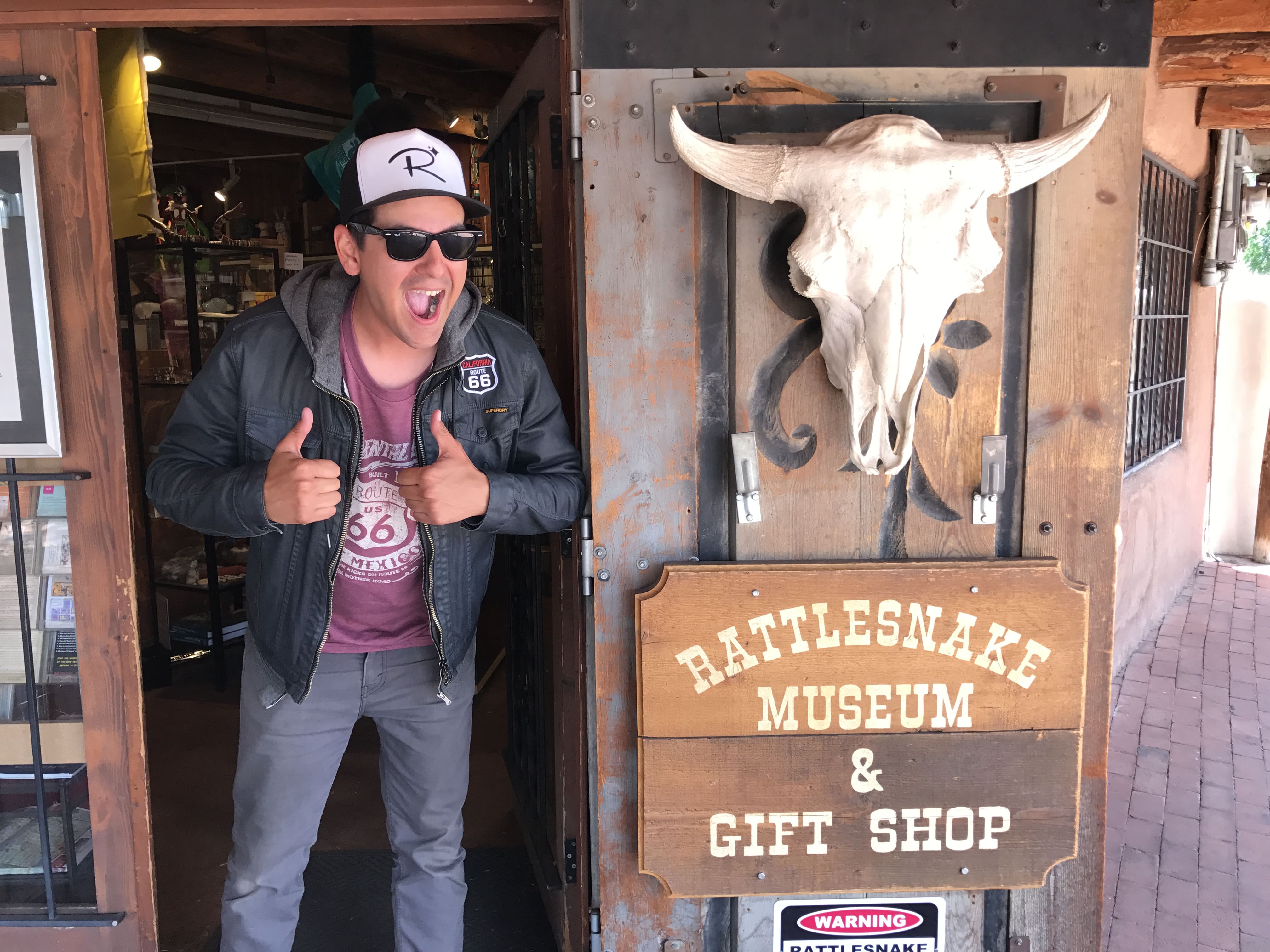
But the other thing is that I noticed that a lot of the stuff I would watch, I would be watching with my nine-year- old son and he would totally tune out and get so bored, because it was presented in a way that was probably a little more geared towards my grandma and her brother that had come down Route 66 in the ‘60s. You know, it was more of a nostalgic thing for them as opposed to presenting it to explain why it was important to people who are a lot younger. And a big chunk of my audience is younger people, like ages eight, nine, up to thirty. So, I thought, “This is a chance to take all of these people who are interested in all of the other wacky stuff I do, theme parks and all that stuff.” I’d say, “Look, there’s all this awesome stuff out there that maybe you might have thought was boring, or someone might have presented to you in the wrong way, or you saw kind of a boring documentary, but look how fun this is.” That’s sort of what I hope to bring to the table for people who watch me. It’s like, look, this is really awesome. There’s this really great stuff out there.
Your audience is quite diverse and pretty vast age-range wise. How do you appeal to that vast of an age-range?
You know, it’s funny, as I’ve done more and more history stuff, the audience has gotten older and older. And after I did the Route 66 videos I got all these letters, these handwritten letters, from people who are in their seventies and eighties. Like, “I came down Route 66 in 1949,” and all this stuff. It’s really crazy. But when I started doing the videos it was just for fun. I got all my friends from the band and we’d put videos up on YouTube. [One of my friends] said a swear word in [a video] and my kid watched it and copied it. And I was like, “Well, that kind of sucks.”
I remember thinking about being a little kid and wanting to listen to music, but if it had any swear words my parents would take it away. So, from very, very early on, I decided that I don’t want to cut kids out from being able to watch. So, from the start I was like, “Why not try to appeal to everyone, and include everybody in it?” That has always been important to me. I’m a grown-up now, but everyone always says, “I thought you were like, ten years younger than you are because you act like a kid.” They always say musicians and athletes never grow up, so that’s sort of me. I’m just a very large ten-year-old.
You’ve talked a little bit about how you prepared for Route 66, but how do you prepare for some of the other videos?
My friends who do YouTube, they’re always looking for what’s going to get the most views ... “I’m going to go film this place where someone got murdered, because a lot of people will watch it.” But I’ve always done the opposite, where I choose to only film things that I’m actually passionate about, because I hope that [my passion] will come across and just be a little more authentic.
But to do research ... most of them are just [places and things] that I’ve already been nerdy about, and I’ve read books about, or get really excited about. When it’s something new, for the most part, I like to just show up and learn about it while I’m there, and sort of transmit what I’m learning at the time. With Route 66 I knew it was going to be a great project, and I’d done a big chunk of [research] the year before. I bought every Route 66 book I could get my hands on and just dove in.
After all the research and reading that you did on Route 66, was there anything that surprised you or stood out to you about the Mother Road?
The big thing that was really surprising to me, or that I wasn’t expecting, was that when I actually got out there, at almost every stop, people were so friendly and so willing to talk when they find out that you’re actually really interested and not just passing through. They’ll talk to you about the next stop and the next three days of stops, and so many of the places I end up finding, and so many of the stories I ended up learning about, I learned from people who were like, “Oh, you’ve got to get off the highway on this exit, you’ll find this old abandoned structure, road and there’s this tree out there, my grandfather had a ranch ...” It’s not just history that I’ve always been attracted to, it’s the stories also.
What has been your favorite part of the trip along Route 66 to-date?
Favorite part of Route 66 so far ... Honestly, it’s just the people. That’s the part that you can’t plan for. That’s the part that the books don’t really talk about. It’s that you get out there, and as soon as you have a sticker on your car that says Route 66 or you’re wearing a t-shirt, everybody, everywhere is like, “You doing Route 66?”
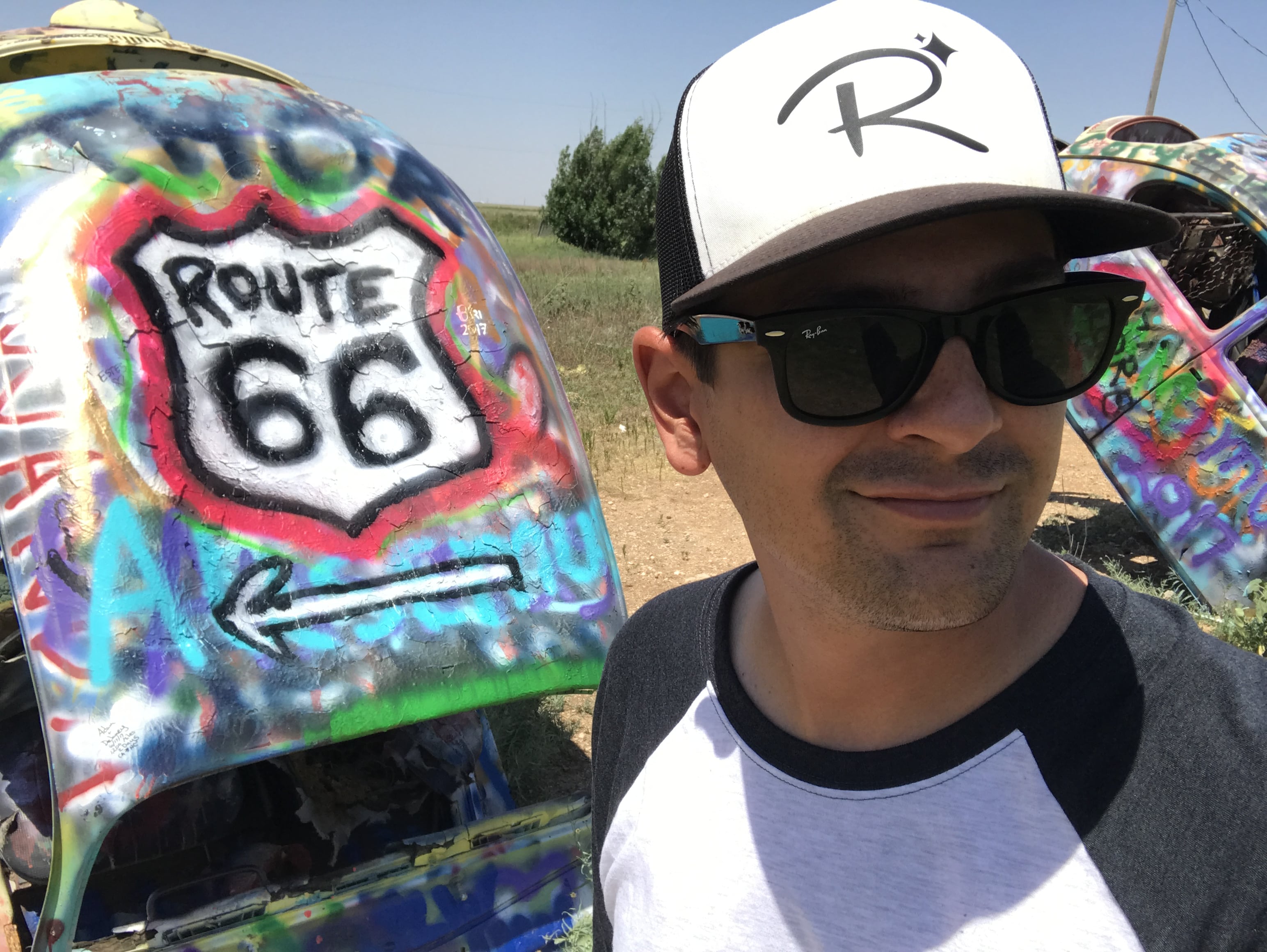
I remember being outside of Grants, New Mexico, and being pulled over to the side of the road at one of the early Bowlin’s Trading Posts, and this big truck pulled up behind me and parked on the side of the road, and I was thinking, “Oh, I’m busted. Someone’s coming to yell at me.” But this guy came out of his truck and he’s like, “You doing Route 66? My dad worked in a uranium mine, and we came down here in such-and-such year, and there were all these rattlesnakes.” He goes inside the abandoned building with me and shows me around, “I remember there were cap guns over here, and I got a cap gun ...” So, that was really the best part. And also, meeting all the people who have opened businesses on the road, like Sam and Monica from the El Trovatore, or David and Amanda Brenner, who bought the Roadrunner Lodge.
And staying at these different hotels with these people who put all their life savings and all their money into buying these old run-down motels and they’re fixing them up. Hearing their stories and the different people they’ve encountered, and seeing the results of the blood, sweat, tears. I think that’s the best part, really. Like, hands down.
Are there any places you haven’t visited yet on 66 that are on your bucket list?
Way too many. I didn’t get to do the Petrified National Forest. I didn’t get to do Funks’ Grove [in Illinois]. There was a lot in the big cities that, just to keep the momentum of sort of what I was doing, I was like, man, if I stop and film everything in Albuquerque, it will take me two weeks just doing that. Same thing with Chicago and St. Louis. So, it was painful, but I had to keep moving through the big cities, because otherwise, I’d stop and stay in every motel. So, there’s still a lot. That was the disappointing part after traveling down Route 66 for almost two months. I was like, there’s so much more I could’ve seen. I could’ve done it three more times.
You tend to embrace Route 66 and travel in a less serious, jovial kind of quirky way. How have audiences responded to your style?
Luckily, the audience that sort of came with me, they were already used to me being the way that I am.
I don’t know how to describe that. My junior high school principal used to call me bungee, because she said I could never hold still. Most of the people who already knew me and were familiar kind of got it. And I think that at first, after the first week, my regular audience, at first there was a weird lull where they were like, “Well, are you just going to keep going down this road?” But I kind of won them over with the history.
Then I started getting a whole new series of comments and letters from people that were like, “Yeah, this is so great. You actually have fun with it.” It was so gratifying and I was grateful for that, because that’s what I really wanted to do. Like I said, a lot of those DVDs when you watch them, they’re real slow and they talk about how sad it was, and everything became abandoned, and the memories ... and there’s an era that’s gone forever. And my whole deal was, not really. Once you get out there, it’s still there. America is still out there. All you have to do is get in the car and get off the interstate, and it’s right there, and it’s still fun and it’s so exciting, and there’s still all these amazing heartwarming people and stories. So, I think people were glad to see something different and see someone having fun with it. I hope.
How is Justin different from the persona in the videos?
I get grumpier. I intentionally don’t film myself if I’m having a bad day. Just because I’ve seen that a lot of Internet content out there is already negative and snarky. So, that part of my personality, I want to keep out intentionally. No one wants to hear about your bad day. But other than that, it’s pretty much me.
I just went to Disney World, and a friend of mine put me up in one of the most expensive hotels and was like, “Here you go, you can film it.” So, I’m staying there, and I spent half ... I filmed this whole video about it, I spent half my time figuring out how to do this thing where I’m jumping from bed to bed, like the floor is lava, and then trying to actually edit it so that the floor sort of looked like lava. At the end of it, I sent the clip to my mom, like, “Look the floor is lava!” And she texted my dad, but accidentally sent it to me, and she was like, “Yup! He’s still the same as when he was seven years old! He’ll probably still be like this when he’s seventy.” So, I was like, “That’s all good.”
There’s no better endorsement to your authenticity than your own mother, right?
Your girlfriend, Ally Warren, has been featured in a number of your videos. How does she feel about being included or having your relationship shared with the public?
When we started dating, she lived at home and the simple version is that everybody that she knew hated me, and it was not a popular decision for her to date me. So, from the very beginning, we sort of kept our relationship out of the videos because, well, no one cares about that. We sort of always had part of our lives to ourselves, which is mostly anything dramatic or negative. Why share that? We’re like yin and yang. She’s so opposite of me. I’m tall and loud and she’s short and quiet. The number one thing people ask is, ‘Why doesn’t she talk more in the videos?’ But she’s really not a talker. So at first it was sort of awkward for her, you know, there’s a camera around all the time, and I’m just standing here, but she’s really expressive in her face. Even if you’re having a conversation with her in real life. Most of her talking is just her facial expressions.
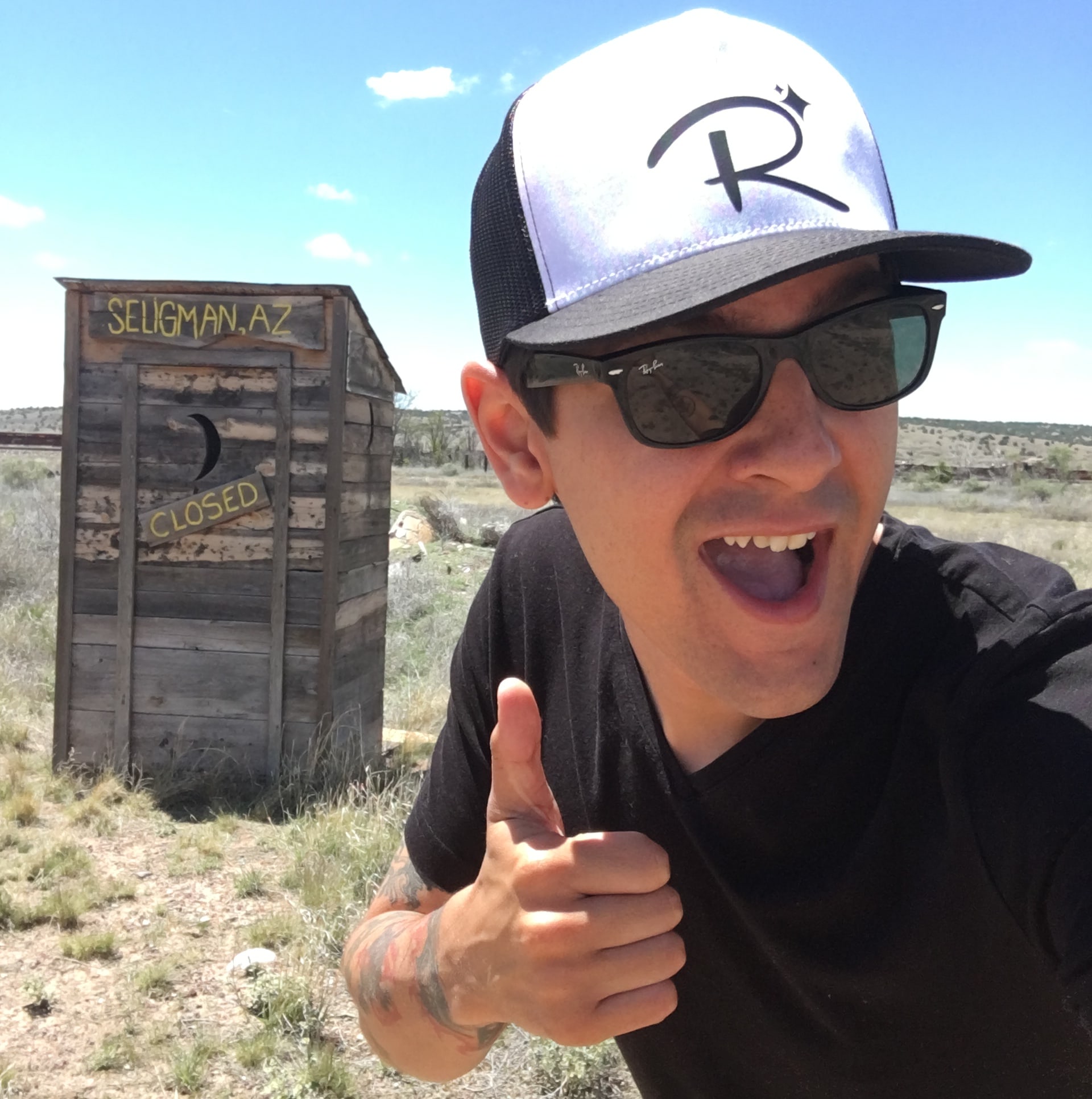
So, over time, as she’s gotten more comfortable, when she’s in the background of the videos, people have started paying attention to the faces that she’s making. They’re really funny. Like she sort of adds this really funny silent straight man element to it by accident. Plus, it’s great because I’m lucky. What other girlfriend would put up with me leaving for forty-five days to go film a highway? And most of the time she wants to go with me, which is great. But then sometimes, she’s like, ‘I’ll stay here. You go. You go film Death Valley in the middle of the summer. I’ll stay right here in the air conditioning.’ But it’s pretty great. I could not have asked for a better partner in that respect. She’s like, ‘Yeah, go do your thing!’
Does it ever get embarrassing when filming around a lot of people?
Sometimes. Luckily, I started doing the videos in Disneyland and places that were full of people already, so I sort of learned to adapt to it. It’s funny because when you watch the videos, people are like, ‘You’re so loud and you’re so crazy. When you go to these places you must really be bothering people.’ But when I actually go out to film them, it’s sometimes line by line. You know, if I’m in a museum and I’m in the room alone, I’ll be doing my thing and somebody walks in, I’ll stop and wait until they leave. Or, wait until I’ve had a conversation with them. I never want to bother anybody else. But sometimes it kind of takes a long time in certain places.
First, when I started, no one knew what I was doing. Now it is, ‘Oh, you must be filming yourself for YouTube.’ But out of [California], a lot of people will still come up to you, ‘What are you doing?’ And then that ends up usually leading to a conversation with people where they are so friendly, like, ‘Oh, let me grab this really old thing behind the counter.’ Or, ‘Hey, when you get to the next town tell Phil that I sent you so that they unlock the place for you.’
Have you ever had any bad experiences while on the road filming?
The only bad experience I ever had was [actually in California], where I showed up with a camera and I said, “Hey I’m here! I want to do some filming!” And the guy went crazy and starts screaming at me. He’s like, “You’re trying to steal from us!” All this crazy ... he lost his mind, charged me four hundred dollars to film there, called my friend and left all these threatening voicemails. But that is it. Every other place in the whole country, everyone could not have been more friendly or accommodating or like, ‘Here film this!’
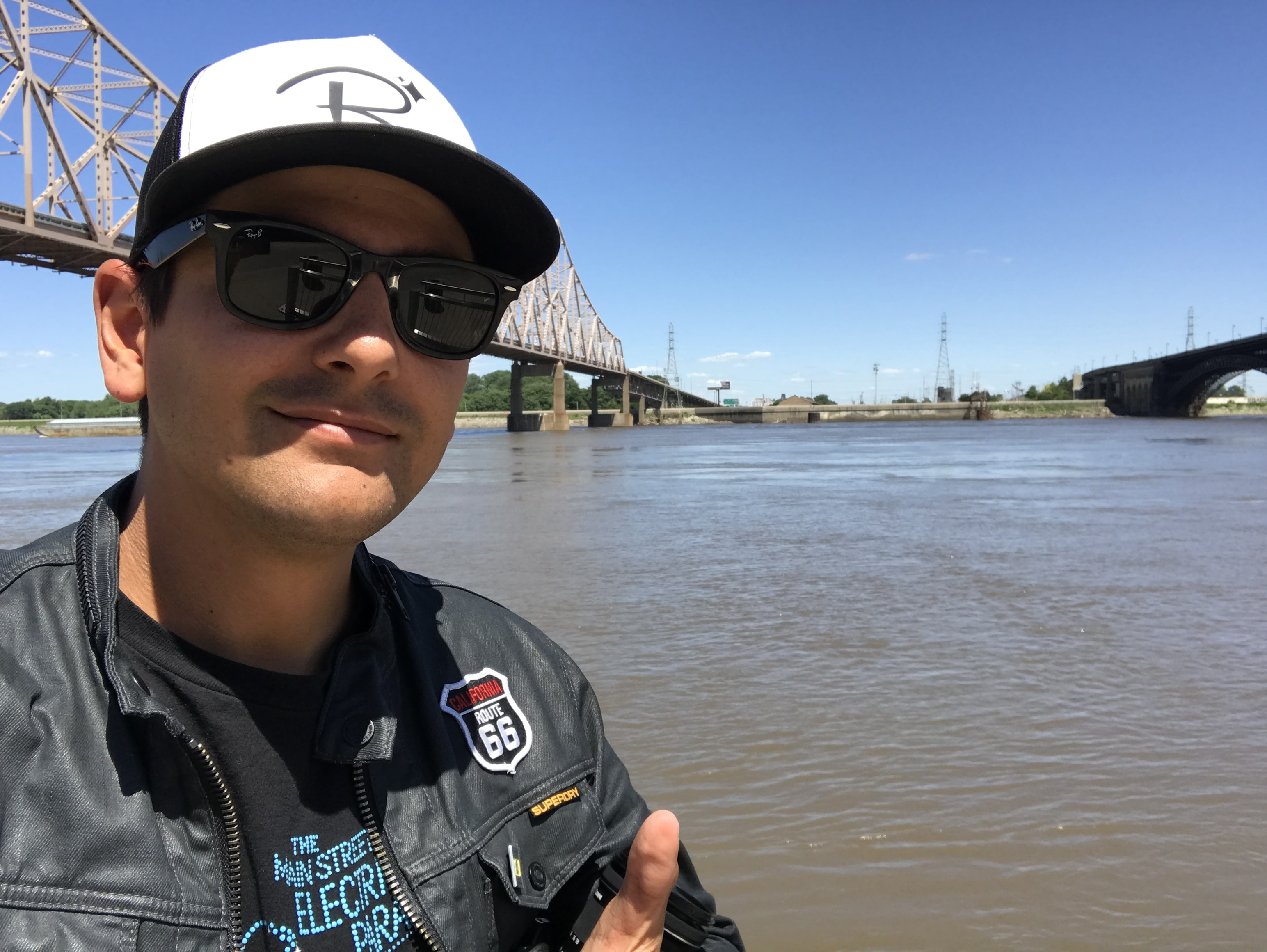
The Navajo Nation people were really friendly about filming stuff, but obviously, their thing is don’t film people here. So, it was a little more challenging, but even they were so friendly about ‘Yeah, film this stuff. You’re more than welcome to!’ So that was pretty cool.
It sounds like most of the people along Route 66 responded pretty positively to your work?
Yeah, and that was something I was kind of worried about. In the “modern age,” people are looking for things to be upset about. And when you’re having fun with something, sometimes it’s hard for people to tell the difference between having fun with something and making fun of something. I always worry about that as I go somewhere sort of historical. I always worry that if I’m making jokes, that they might see this crazy guy with a camera and think that I’m making fun of them, which I would never do.
So, I was really glad that, in the end, they all sort of saw that, ‘Wow, this is really cool what you’re doing.” Most of them have been like, ‘Yeah, come back!’ Or any place that I showed that was closed, I’ve gotten a lot of letters from people who own it, they’re like, ‘Next time, here’s my phone number, just call me and I’ll come unlock it for you.’ I’m really, really grateful and kind of humbled that everybody was so excited about how it ended up.
Your YouTube channel has been a quest for positivity. How does this philosophy influence your video content?
The quest for positivity ... I started doing the videos just for fun, just like a funny thing, and then I went through this really nasty divorce and I have Celiac disease, and it was undiagnosed. I had no idea what I had. So, I spent seven years where I couldn’t work, I couldn’t do anything. I had a small child, so I ended up kind of being a stay at home dad out of seven years of pain and being anemic from blood loss. Just like a whole horrible experience. I had bad doctors who misdiagnosed the problem, told me not to do exclusion diets. It’s a whole long story. I spent seven years doing that. I was in a band that really wasn’t going anywhere by the end. Just really depressing. I remember when the whole divorce was final, I had to make a decision that, well, I’m either going to let all this get to me, or I’m going to choose to be positive, to try to find good in this situation, because at first, I couldn’t see any. I just made a conscious decision and I put it in a video, mostly just to keep myself accountable to my own, sort of, quest, that I can’t control my circumstances. I can only control my reaction to the circumstances. So, that sort of became, that sort of morphed into the quest for positivity where I used to be a much more cynical person. And, like everyone else, I’d get down, I’d complain about things. The quest for positivity is really a conscious decision, and I started inviting a lot of people to start doing it with me, and a lot of people have.
A conscious decision to say I can’t control everything. Sometimes things totally suck, but I can try to control my reaction to it and look for the good in every situation I can and still try to focus on being positive, putting positive things out into the world.
Where do you hope that your YouTube channel will lead you? What are your future plans with your channel?
I don’t know. I was just thinking about that actually. There’s so much to see, there are actually too many things. Doing Route 66 was so amazing that it made me really interested in the Lincoln Highway and all these other different roads or the Trans-Canada Highway. But then at the same time, I’m like, I’d really like to go overseas and do more historical stuff there. But then every time I think about going overseas, I think about all the amazing stuff in the United States that’s still out there to be seen. Talking to you makes me really want to do Route 66 again, although I’m not sure if everyone else is ready for me to go back already. But hopefully, after an appropriate amount of time, I hope to do Route 66 all over again. You know, maybe next time in a classic car or something. But, there are just so many stories out there to share, so many weird things to see, that sometimes I get overwhelmed. Where am I going to go next? But, wherever it is, it should be fun.
